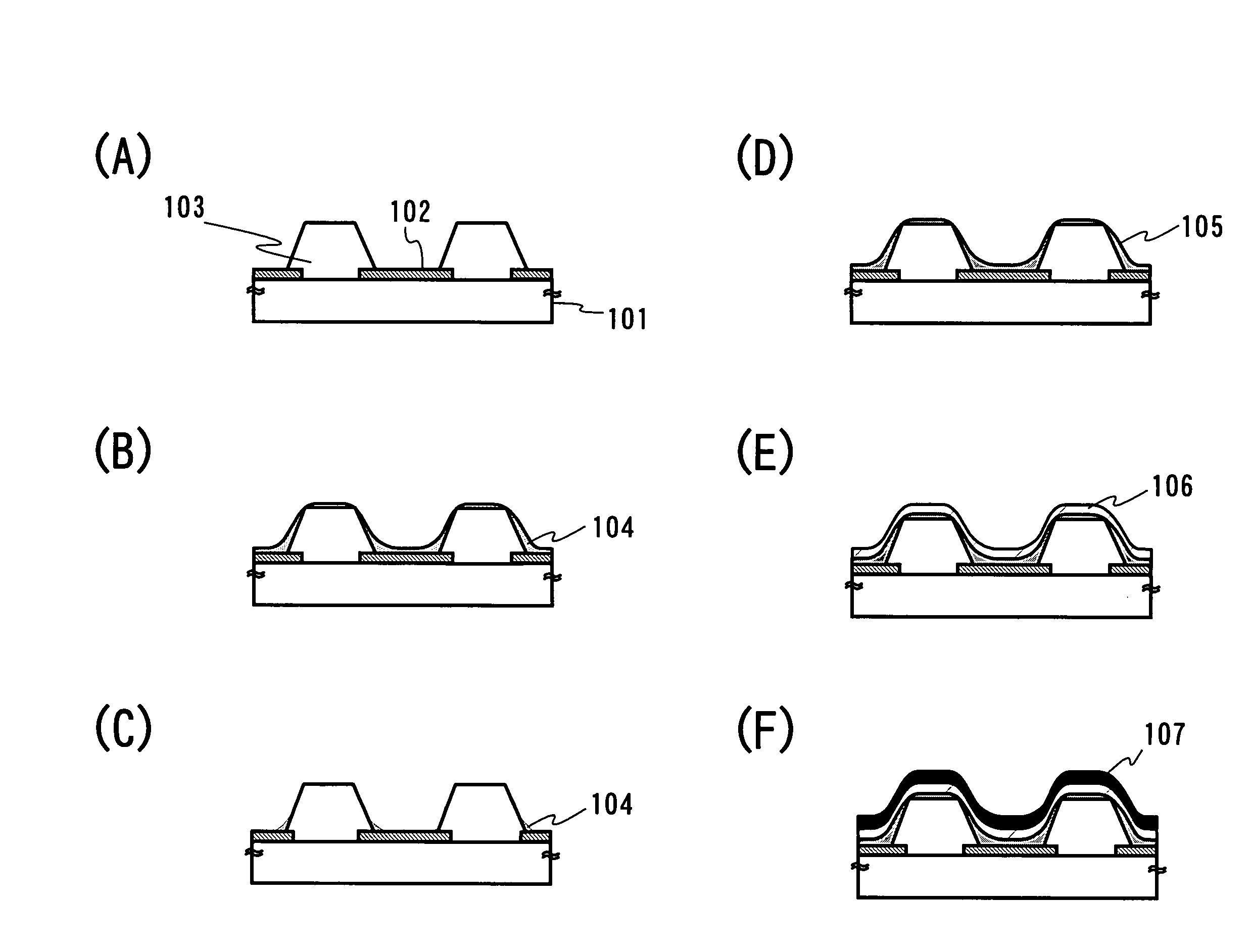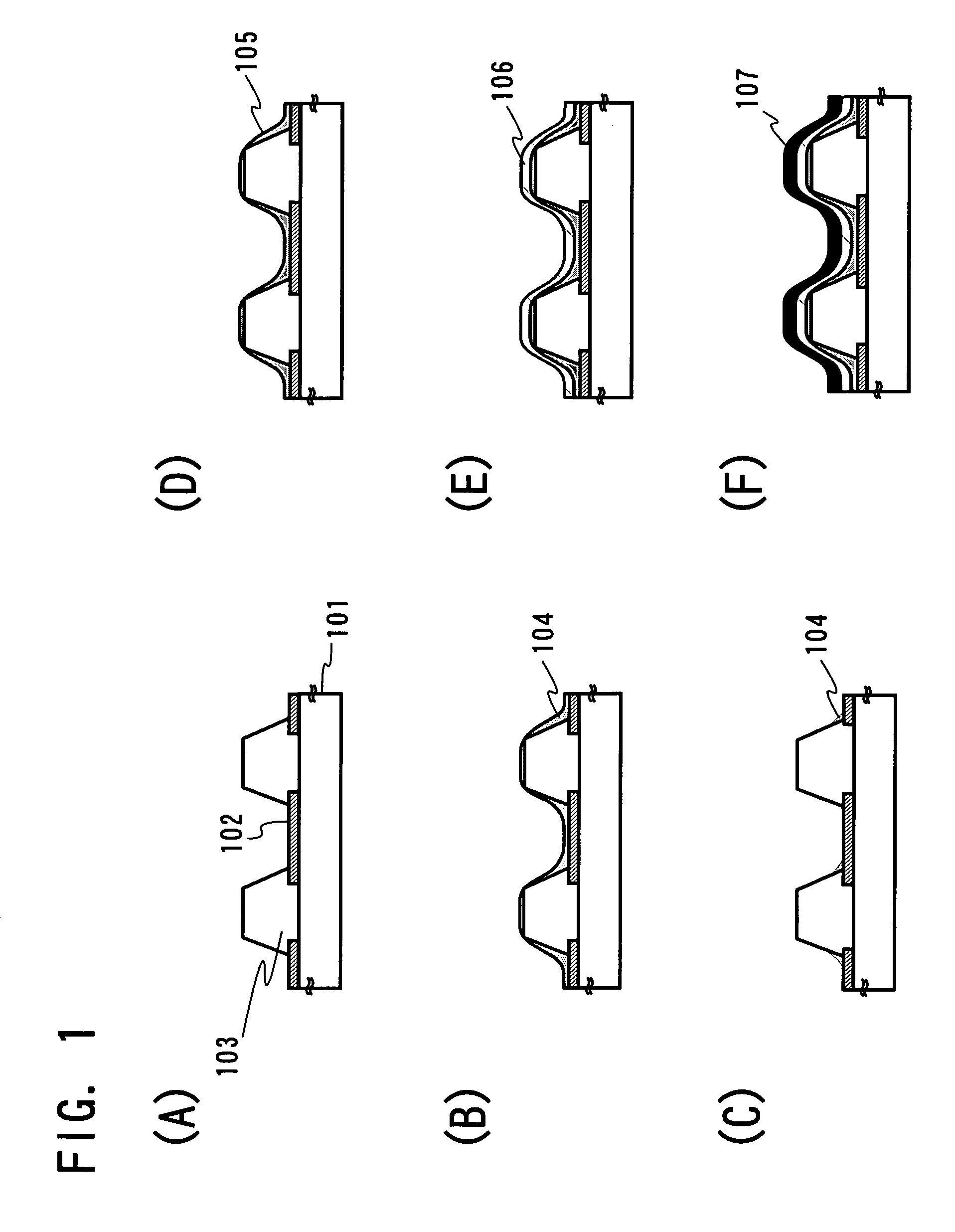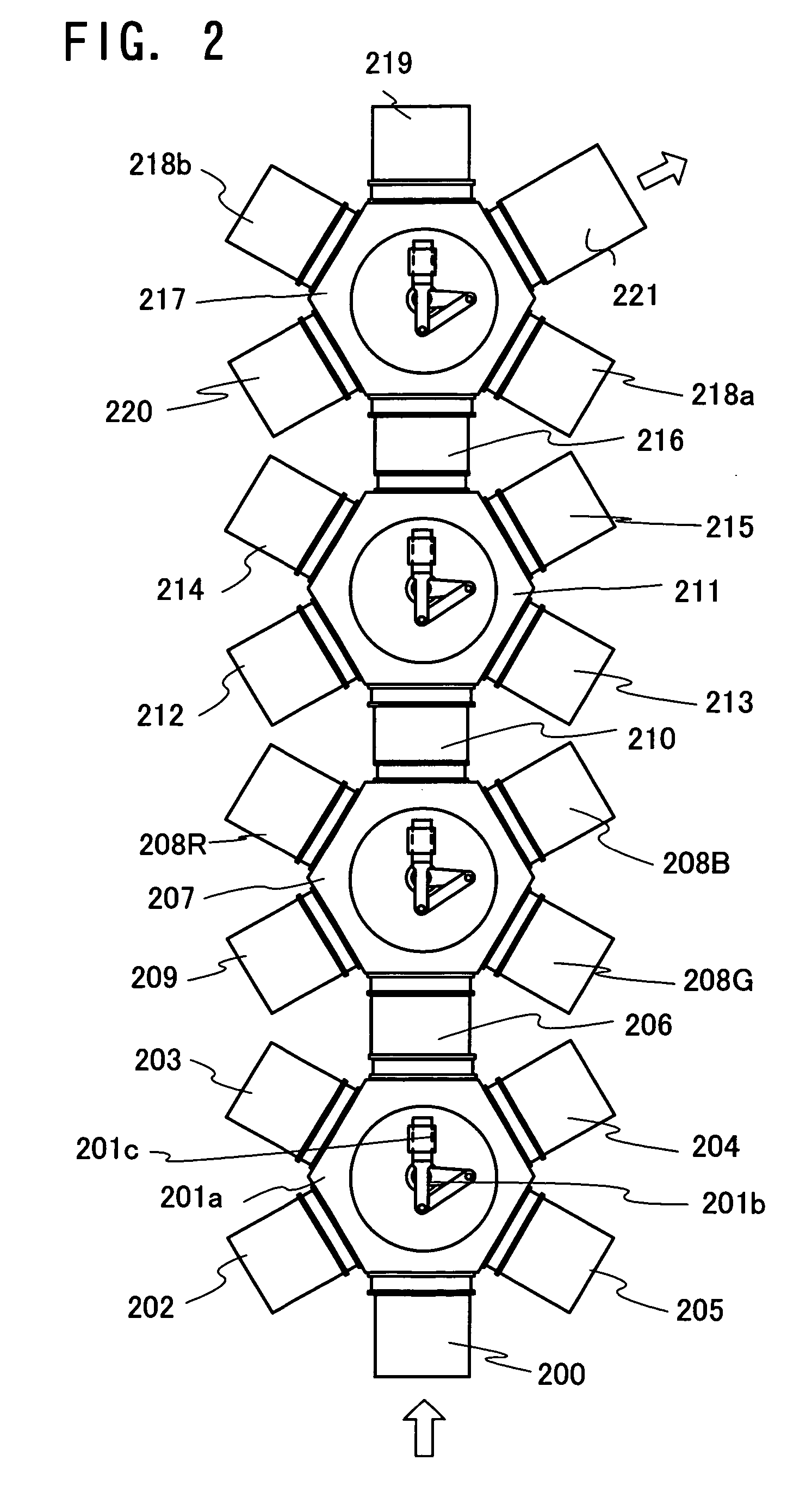Manufacturing method of display device
a display device and manufacturing method technology, applied in the manufacture of electric discharge tubes/lamps, cold cathode manufacturing, electroluminescent film used for light emitting elements using organic el materials, etc., can solve the problems of limited technique and deterioration of contact with electroluminescent films, and achieves convenient production and low cost. , the effect of simple method
- Summary
- Abstract
- Description
- Claims
- Application Information
AI Technical Summary
Benefits of technology
Problems solved by technology
Method used
Image
Examples
embodiment mode 1
(Embodiment Mode 1)
[0035]A schematic diagram of a method for manufacturing a display device of the present invention is shown in FIGS. 1(A) to 1(F) in the order corresponding to the steps while showing the cross sections. In FIG. 1(A), the one provided with a first electrode 102 on a substrate 101 and an insulating barrier 103 for surrounding the first electrode 102 is shown.
[0036]FIG. 1(B) shows a cross sectional view when the solution including an acceptor is applied over the substrate 101 in wet process as a first step. A solution layer 104 comprising the acceptor is formed on the first electrode 102 and the insulating barrier 103.
[0037]As for the acceptor, an organic compound having sulfonic acid group is preferable. For example, poly (styrenesulfonic acid) is given as an example, and further, aqueous solution is preferable for the solution including the acceptor.
[0038]Then, a cross sectional view after water is brought into contact over the substrate 101 as a second step is sho...
embodiment mode 2
(Embodiment Mode 2)
[0060]A metal which serves as an electron injection electrode (for example, AlLi alloy, MgAg alloy, or the like) is formed over the substrate by vacuum vapor deposition or EB method. Next, the solution including a donor is applied in wet process. As the donor, alkylammonium ion (for example, tetraethylammonium, tetrabutylammonium, or the like), or Tetrathiafulvalene (hereinafter referred to as “TTF”) are preferable. For the last, the conductive polymer including the donor is applied in wet process. As the conductive polymer, poly (aniline), poly (pyrrole) or the like is preferable.
[0061]The electroluminescent layer can be formed by vapor deposition or application in wet process. As the structure of the electroluminenscent layer, the structure of the light emitting element using the known organic EL material is preferably used. As an anode of the hole injection electrode, an ITO film is preferably used. The ITO film is preferably formed by sputtering, electron beam...
embodiment
(Embodiment 1)
[0062]FIG. 3(A) shows a substrate used in this embodiment. And FIG. 3(B) shows a cross sectional view of A–A′ in the drawing. An insulating barrier 303 is formed by photolithography over a glass substrate 301 on which a transparent electrode 302 of ITO is patterned. The transparent electrode 302 of the ITO is a rectangle with a film thickness of 100 nm and length of 300 μm and width of 60 μm. The insulating barrier 303 is formed from acrylic resin, which has 1.5 μm height.
[0063]In order to obtain the hydrophilic property of the transparent electrode 302 of ITO and the insulating barrier 303, UV ozone rinsing is carried out. Then, 1.5 wt % poly (styrenesulfonic acid) aqueous solution is spin coated. Pure water is applied to the substrate immediately, and the substrate is spun to cut the water. Lastly, PEDOT / PSS aqueous solution is applied over the entire surface so as to obtain the film thickness of 60 nm by spin coating, prebaked at 80° C. for 10 minutes, baked at 200°...
PUM
| Property | Measurement | Unit |
|---|---|---|
| thickness | aaaaa | aaaaa |
| width | aaaaa | aaaaa |
| length | aaaaa | aaaaa |
Abstract
Description
Claims
Application Information
 Login to View More
Login to View More - R&D
- Intellectual Property
- Life Sciences
- Materials
- Tech Scout
- Unparalleled Data Quality
- Higher Quality Content
- 60% Fewer Hallucinations
Browse by: Latest US Patents, China's latest patents, Technical Efficacy Thesaurus, Application Domain, Technology Topic, Popular Technical Reports.
© 2025 PatSnap. All rights reserved.Legal|Privacy policy|Modern Slavery Act Transparency Statement|Sitemap|About US| Contact US: help@patsnap.com



